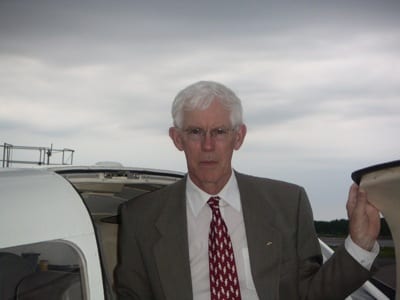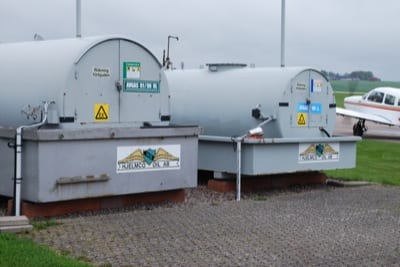While the future of 100LL and its proposed replacement remain unclear in the U.S., Europe will have solved the problem by the end of 2011, according to Lars Hjelmberg, founder and CEO of Sweden’s Hjelmco Oil.
The European Aviation Safety Agency (EASA) has just issued Safety Information Bulletin (SIB) Number 2010-31, clearing Hjelmco’s unleaded avgas 91/96 and 91/98 for use in any aircraft where the engine manufacturer has approved this fuel. This means that in countries within the EASA’s jurisdiction, aircraft owners wishing to use Hjelmco’s unleaded avgas no longer need to wait for airframe manufacturers to update their POHs or seek an update of a POH issued by an airframe company no longer in operation. Hjelmberg reported: “With our approvals from Lycoming, TCM, [Polish engine maker] Kalisz and Rotax we now have a carte blanche for our unleaded avgas for more than 90% of the entire European piston aircraft fleet.”

Hjelmberg described the differences he sees in general aviation on opposite sides of the Atlantic: “The aircraft population in Europe differs from the U.S. We have gotten rid of most old piston twins and gas-guzzling inefficient engines and now operate primarily on more efficient Continental and Lycoming 91/96 avgas-rated engines as well as on super efficient Mogas or unleaded avgas-powered Rotax engines.”
In addition to Hjelmco’s unleaded avgas serving northern Europe, France’s Total, one of the world’s largest oil companies, will launch its unleaded avgas 91 later this year to supply southern and central Europe. A new Polish producer will be coming online soon to serve central Europe and former eastern Europe and Russia with its unleaded 91 grade. By the end of 2011, according to Hjelmberg, the entire European continent will have the ability to use unleaded avgas grade 91. In addition to this fuel, unleaded, ethanol-free Premium Mogas is already available at many airports and powers 30%-40% of piston-engine aircraft according to estimates.
“The issuance of the EASA SIB is a good example of how our regulatory authority assists in bringing order to the market as well as securing a future for general aviation,” he said. “It is also an example how the U.S., once in the lead on this issue, has now lost the initiative. If U.S. producers want to sell products in Europe they will have to adapt or will not be able to sell their products here.”

With the rapid adoption of unleaded fuels in Europe, Hjelmberg believes that leaded fuels might disappear sooner than previously expected. Cirrus Aircraft appears to be anticipating this, as evidenced by the introduction of the Cirrus SR22T model with the 94UL-rated Continental TSIO-550-K engine. “Cirrus Aircraft will have a flying start here in Europe with our unleaded avgas and their SR22T model,” Hjelmberg said.
Obviously, he is pleased with these developments: “This is the best thing that has happened in my 30 years in the unleaded avgas business. Better yet, the Swedish Ministry of Environment now wants to lower or perhaps eliminate altogether fuel taxes on unleaded avgas for a certain period of time to accelerate its introduction.”
When might Americans see Hjelmco’s unleaded avgas? “We have located a refinery in the northern U.S. which has the capability to make our unleaded avgas. We are not prepared to say yet when or if we’ll produce our fuels there, however.”
For more information: HJELMCO.com
Copyright © 2010, Kent P. Misegades

For Gordon:
We also have an unleaded AVGAS 100 submitted to the ASTM
in 2006 with a quite another formula than Swift and Gami fuels.
For more info see
http://www.hjelmco.com/upl/files/8900.pdf
Gordon,
Note that Hjelmco makes and sells 100LL in addition to their unleaded products. I have visited numerous airfields in Europe where 3-4 fuels are available, 100LL, Mogas, Jet-A and Hjelmco’s 91/96UL. 100LL consumption is on the decline in the US just as in Europe, and for many reasons. New small airplanes using Rotaxes while folks who once flew heavy pistons now fly single turbines and light jets. Whether or not the EPA bans 100LL is perhaps not the critical issue, it’s how long Innospec will bother making TEL and how much longer refineries will continue making a boutique fuel like 100LL. The numbers seem to work for Hjelmberg and others in Europe; we should not categorically dismiss them since they are on the other side of the Atlantic. I do not have the same sense of the “one-size-fits-all” attitude in Europe that is prevalent here.
That’s all well and good, but 70% of the avgas consumed in the US is run in engines that require 100 octane, so this in not a viable product in the US. As far as his look-down-the-nose “gas guzzling inefficient engines” comment, the big-bore Continentals have BSFC’s of 0.38, which is extremely efficient, so Lars is obviously misinformed on this issue.